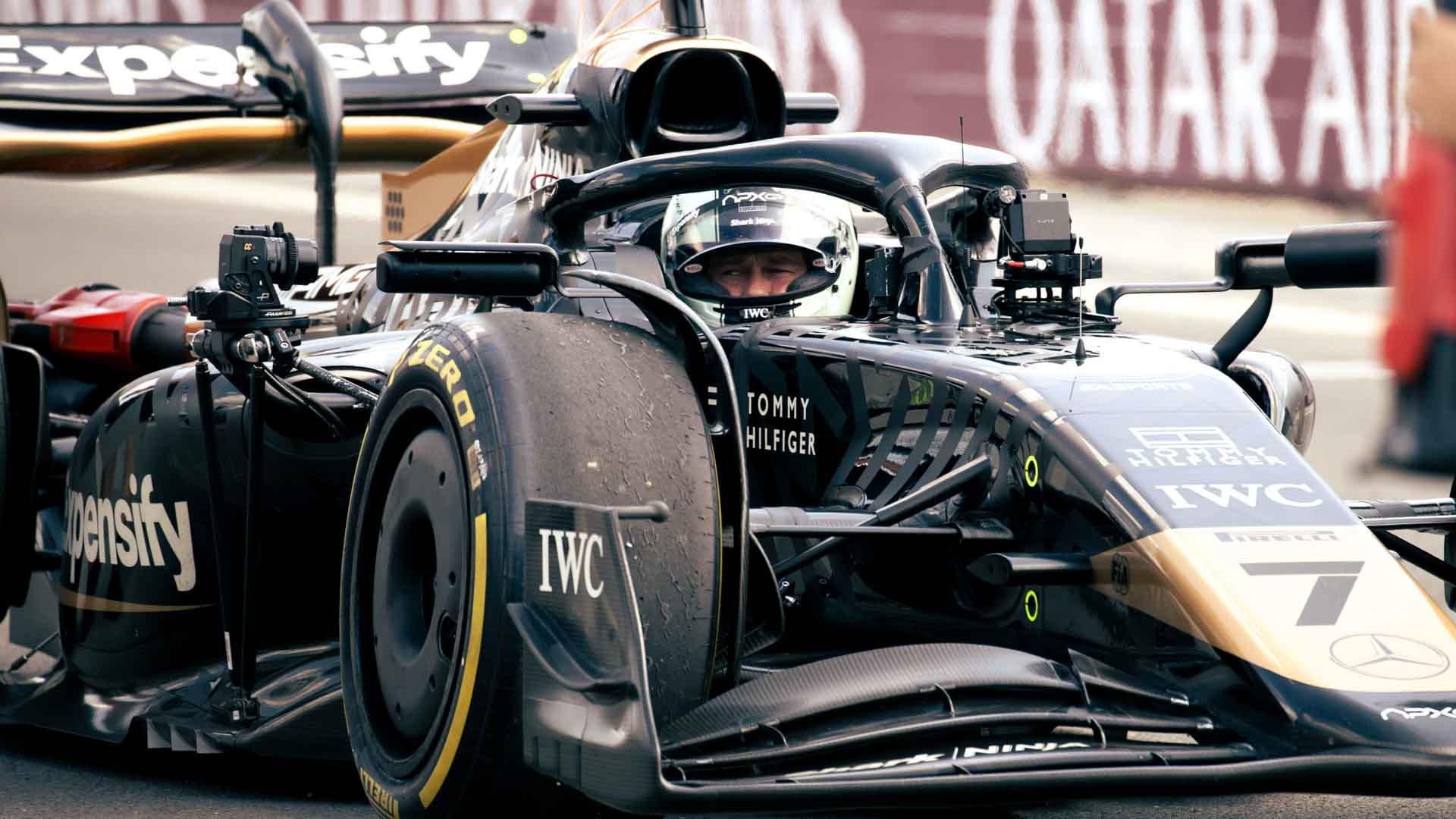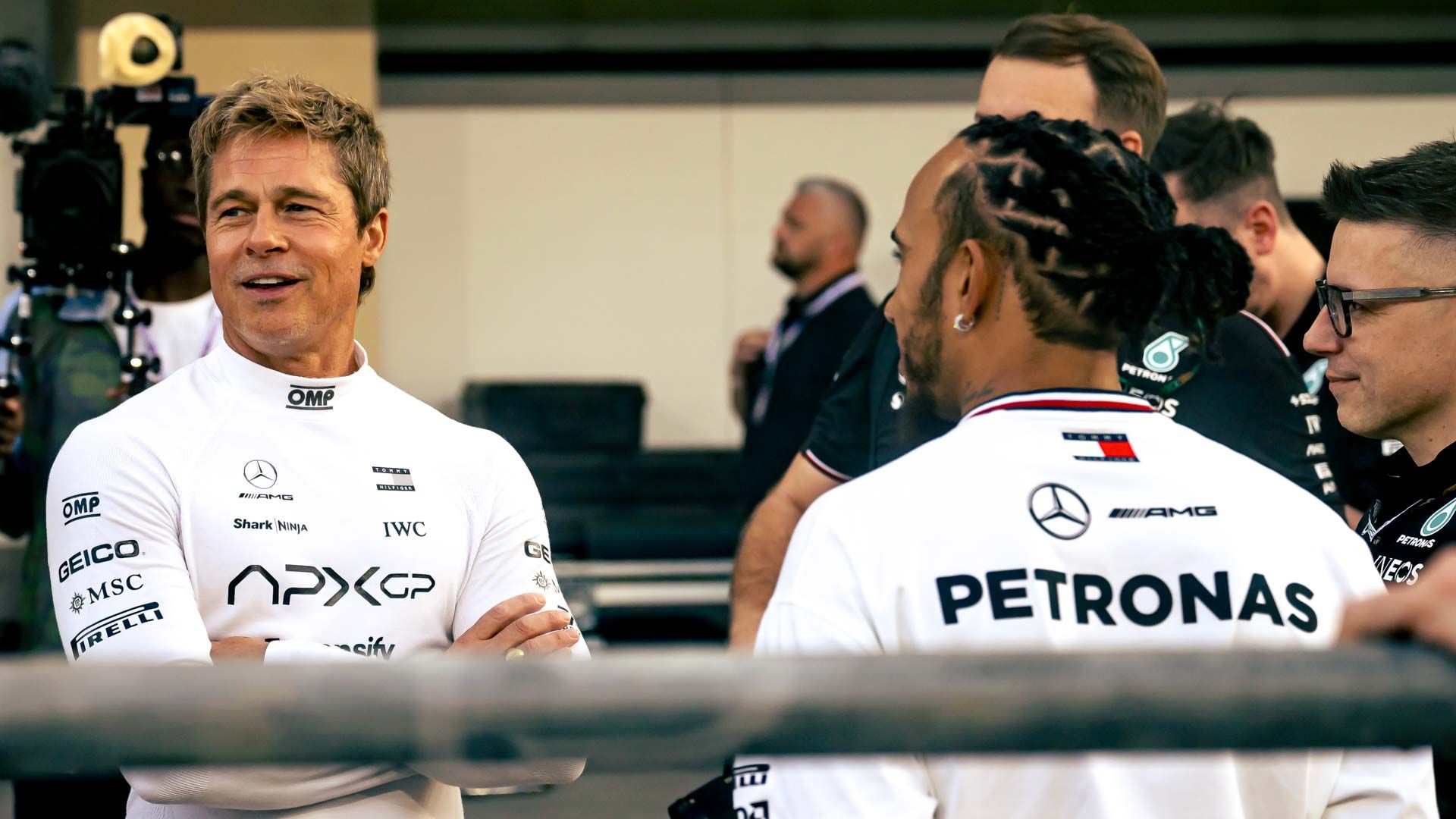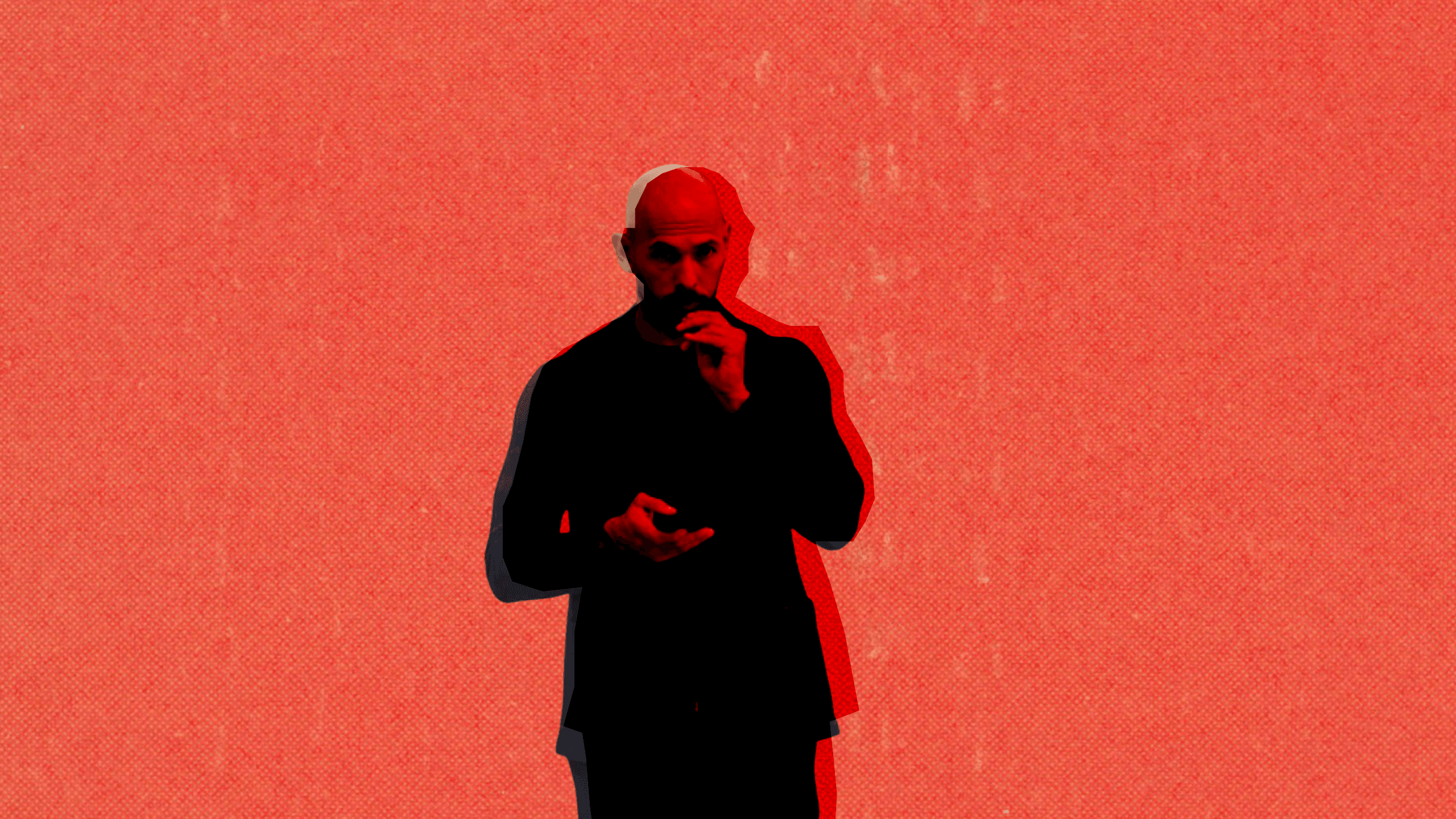The lights extinguish instantly, plunging the circuit into that split-second of primal anticipation. Then it happens. An eruption of collective horsepower is unleashed as 20 Formula 1 cars dive towards turn one at Albert Park in Melbourne, but one of the most sponsored cars this year won't be joining them.
That car, dressed in distinctive black and gold livery of team APXGP, emblazoned with logos from Expensify, Geico, EA Sports, IWC Schaffhausen, and Tommy Hilfiger, exists only on film.
It's the centrepiece of , which has grossed over $560 million globally since its June 2025 release. But unlike previous motorsport films, this one wasn't made about the sport. It was made for it.
It represents a fundamental shift in the intersection of sports and entertainment. Films about motorsport have existed for a long time, but previously they've been stories that filmmakers wanted to tell, not a tool to grow the fanbase for a sport. But all of that has recently changed.
exemplified the old model. The film chronicled the legendary 1976 rivalry between Niki Lauda and James Hunt with craft, earning $98 million at the global box office and critical acclaim. For the producers and film studio, it was a success. However, it didn't trigger a surge in F1 viewership.
It was a historical drama featuring two massive personalities, their duel on the racetrack and ultimately the respect shared between athletes when each race can result in death. It was a drama that happened to feature Formula 1, it was not a marketing ploy to grow the fan base of the sport.
One can go back to 1966 for the release of , a film that follows four different races throughout a fictitious racing season, with surprisingly modern feel. It was one of the highest-grossing films of its year and won three Academy Awards for its technical achievements.
Caption of the video
The sponsors in these films were either period-accurate details for authenticity or incidental, certainly not funding the production itself or an asset to grow the sport. I’d argue that films used the track, cars and drivers as their canvas. They observed the sport but they did not serve it.
Things started to change when Liberty Media Corporation, an American mass media company founded by John C. Malone in 1991, acquired Formula 1 in 2017, fundamentally reimagining the sport as an entertainment property.
This wasn't merely about broadcasting races; it was about creating a multimedia ecosystem where every touchpoint served the objective of expanding the fan base. , launched in 2019, pioneered this approach. Unlike traditional sports documentaries, it wasn't made to celebrate F1's history; it was explicitly designed to attract people who had never watched a race.
The series humanised drivers, manufactured rivalries, and packaged the sport as accessible drama for global streaming audiences. The Drive to Survive series created a soap opera for the sport. Fans now had a reason to support teams, follow storylines and support the character they knew wearing the helmets. Other sports can lean on club rivalries, the pride of supporting a team that represents your local town or nation. Formula One racing teams are a house of brands, owned by large corporations.
The results validated the strategy. Since 2019, F1's popularity has exploded, with the sport now boasting over 750 million fans worldwide, with an impressive 42% under the age 35. Female viewership jumped from approximately 32% in 2017 to around 40% globally. In the United States, where F1 had been commercially irrelevant, interest surged by roughly 10% between 2019 and 2022. The US now hosts 3 races a year, Austin, Miami and now iconically, along the Las Vegas strip.
The Brad Pitt F1 film is perhaps the culmination of this strategy.

Brad Pitt on the set of Formula One (2025).
Producer Jerry Bruckheimer revealed that through brand partnerships, they "raised more money for our car than some Formula 1 teams". This wasn't hyperbole. Companies paid to place their logos on a fictional racing car in a Hollywood film because the movie itself functions as advertising infrastructure.
Consider what makes this fundamentally different from Rush or : F1 granted unprecedented access to actual race weekends, real circuits, and existing teams. The sport wasn't merely allowing itself to be filmed; it was an active collaborator. The film featured real racers and Drive to Survive fan favourites like Guenther Steiner. Formula One CEO Stefano Domenicali publicly stated the film's impact would be "massive" and potentially surpass Drive to Survive in attracting new audiences.
The film had explicit targets for fan acquisition and demographic expansion. Liberty Media reported the movie contributed to record Q2 2025 revenues, with US F1 viewership increasing 7% year-over-year, partially attributed to buzz surrounding the film's release.
Brands weren't just buying product placement in a movie; they were buying access to a coordinated marketing campaign spanning theatrical release, streaming distribution, race weekend activations, and F1's existing digital ecosystem. A common rule of thumb for determining the marketing budget of a movie is to consider the film's production budget. In this case, it was somewhere between $250 million to $300.
The box office validated this approach. With over $560 million in global ticket sales and more than $85 million in IMAX revenue alone, the film became the highest-grossing IMAX Hollywood release of 2025. Critics gave it an 82% rating on Rotten Tomatoes, though reviews noted it prioritised spectacle over substance, precisely the accessible, commercial approach intended to reach non-enthusiasts. Superfans of Formula One would say they felt the film treated them like idiots, but let's be honest. It wasn’t made for them.
Of course, this shift raises questions. When Senna was made, it was created by filmmakers passionate about telling Ayrton Senna's story. When Rush was made, Ron Howard wanted to explore the psychological dynamics of elite competition. These were artistic endeavours that happened to involve motorsport.
Conversely, F1 exists because Liberty Media identified a commercial opportunity to monetise Hollywood's reach. The film's quality is secondary to its function as a marketing vehicle. Critics noted the plot was formulaic and characters lacked depth—but those criticisms miss the point. The film wasn't designed to win Oscars; it was designed to sell Formula 1.
This doesn't necessarily make it cynical. The content is entertaining, the racing sequences are spectacular, and millions of people genuinely enjoyed it.
The Brad Pitt F1 film's success confirms we've hit an inflection point where major sports will increasingly function as entertainment franchises with competitions attached, rather than competitions that occasionally generate entertainment. It’s a track we’ve been on for a while, arguably since the rise of the significant dollars from cable TV hit sports.
Formula 1's transformation from a niche motorsport to a global entertainment powerhouse wasn't accidental. It was engineered through strategic media partnerships, coordinated content production, and commercial integration, treating fans as consumers to be acquired through narrative products.
The fictional APX GP car, sponsored by real brands but never racing on a real circuit, is a metonym for this shift. It's not a racing car, it's a marketing platform, built on an old F2 chassis, wrapped in carbon fibre.
It may have been the smartest sponsorship in Formula 1 this year.









